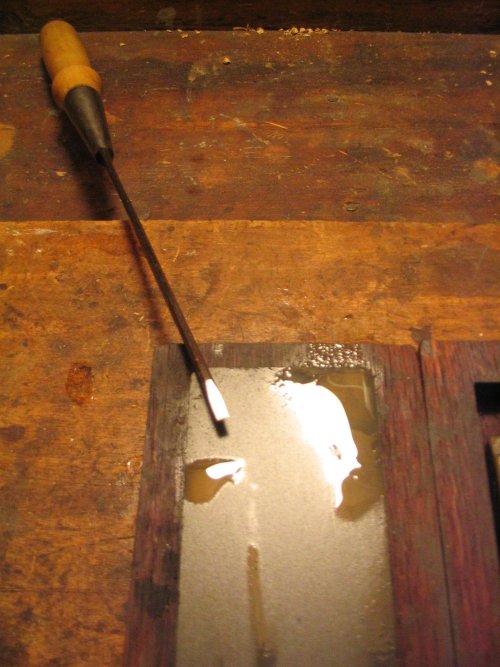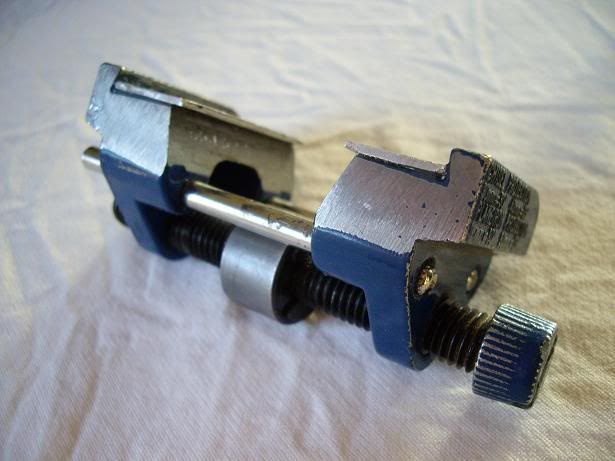I don't want to spoil the well-started honing guide game, but really, the time spent on the jigs could be used to learn a skill.
I konow, it's not the easiest chisel to freehand, but once you learn it it's easy as eating pie. And it gives you the ability to repeat the process with any chisel, so instead of building a specialized jig for one single chisel you get a skill usable on any tools.
First, clamp the stone down to waist height, kitchen table is about OK. Then, clamp your elbows to your sides (mentally). And then just move your feet and nothing else to move the bevel across the stone.
It's a 13" long 1/8" chisel, just about the same as yours.
The suggestions on any jigs are good and valuable, but as far as I see it it's just stupid to try to substitute a skill with a gizmo.
I think myself as one of the clumsiest men who hasn't fallen off earth yet, but even I have been able to learn the movements required for sharpening any edge. I'm not brilliant at it, but I know I'm a lot faster at sharpening than building one-off jigs. And they end up pretty sharp in the end anyway.
Pekka



































